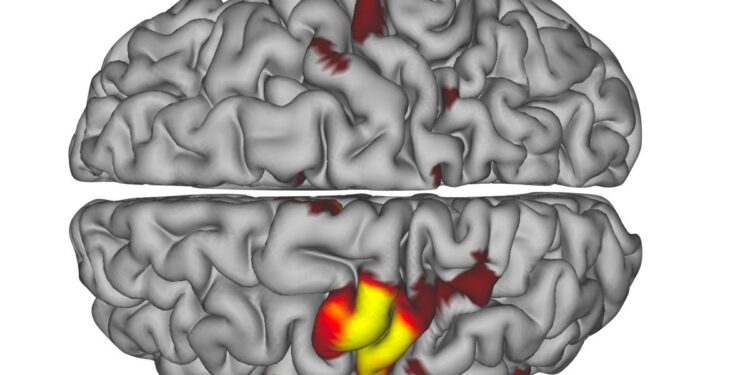Scientists have uncovered a previously unknown rhythmic pulse in the human brain that could serve as an early indicator of Alzheimer’s disease, according to a groundbreaking study reported by ScienceDaily. This discovery sheds new light on the complex neurological changes underlying the onset of Alzheimer’s and opens promising avenues for early diagnosis and intervention. Researchers believe that monitoring this brain pulse may enable clinicians to detect the disease before cognitive symptoms emerge, potentially transforming the landscape of Alzheimer’s research and patient care.
Discovery of the Brain’s Hidden Pulse Offers New Clues in Alzheimer’s Prediction
Recent breakthroughs in neuroscience have unveiled a subtle, rhythmic signal within the brain that could revolutionize the way Alzheimer’s disease is predicted. This “hidden pulse,” detected through advanced neuroimaging techniques, appears to be closely linked with early cognitive decline-a stage typically challenging to identify before symptoms become pronounced. Researchers highlight that monitoring this pulse may offer a non-invasive biomarker, enabling earlier intervention strategies and personalized treatment plans.
Key characteristics of this discovery include:
- Frequency: A distinct oscillation occurring at ultra-low frequencies, previously undetectable by standard EEG or MRI methods.
- Localization: Concentrated mainly in hippocampal and cortical regions, areas known for memory processing.
- Predictive Potential: Correlates strongly with subtle memory lapses and amyloid-beta accumulation, hallmarks of preclinical Alzheimer’s.
| Brain Region | Pulse Frequency (Hz) | Alzheimer’s Link Strength |
|---|---|---|
| Hippocampus | 0.03 | High |
| Temporal Cortex | 0.05 | Moderate |
| Prefrontal Cortex | 0.02 | Low |
Insights Into How Neural Rhythms Influence Disease Onset and Progression
Recent research has unveiled a previously undetected neural rhythm that appears to play a crucial role in the early stages of Alzheimer’s disease. These oscillatory patterns, often referred to as the brain’s “hidden pulse,” regulate communication between different brain regions and could serve as predictive biomarkers for disease onset. Scientists employed advanced neuroimaging and electrophysiological techniques to track these rhythms, noticing marked disruptions in individuals who later developed cognitive decline.
Key findings emphasize the potential benefits of targeting these neural oscillations to slow or halt disease progression. Notably, the study highlighted:
- Altered gamma rhythms: deviations in the frequency and amplitude correlate with early amyloid-beta accumulation.
- Synchrony breakdown: impaired communication between hippocampal and cortical circuits precedes memory deficits.
- Therapeutic targeting: modulation of neural pulses using non-invasive brain stimulation shows promise in restoring rhythm integrity.
| Neural Rhythm Feature | Normal Function | Observed Alzheimer’s Impact |
|---|---|---|
| Gamma Oscillations (30-80 Hz) | Facilitate attention, perception, memory encoding | Reduced power & coherence in early-stage patients |
| Theta Waves (4-8 Hz) | Support spatial navigation, working memory | Disrupted phase locking to hippocampal circuits |
| Alpha Rhythm (8-12 Hz) | Involved in cortical inhibition and relaxation | Prolonged desynchronization noted in resting state |
Experts Recommend Early Monitoring of Brain Pulses for Proactive Cognitive Health Strategies
Recent advances in neuroscience have unveiled a subtle, rhythmic brain pulse that could serve as a critical biomarker for early Alzheimer’s detection. This groundbreaking discovery emphasizes the importance of continuous brain activity monitoring using non-invasive technologies. Experts argue that identifying these oscillations in neural pulses before the onset of clinical symptoms could revolutionize how cognitive decline is anticipated and managed. Real-time tracking of these pulses enables healthcare professionals to implement tailored interventions that may slow or even prevent the progression of neurodegenerative diseases.
Implementing early monitoring programs may include benefits such as:
- Personalized cognitive health plans
- Targeted lifestyle adjustments to enhance brain resilience
- Improved efficacy of emerging pharmacological treatments
- Data-driven insights for longitudinal studies
| Monitoring Method | Detection Sensitivity | Patient Comfort |
|---|---|---|
| EEG Pulse Tracking | High | Non-invasive |
| fMRI Brainwave Analysis | Moderate | Moderate |
| Wearable Neuro-Monitors | Emerging | Highly Comfortable |
Insights and Conclusions
As researchers continue to unravel the complexities of the brain, the discovery of this hidden neural pulse marks a promising step toward earlier detection of Alzheimer’s disease. While further studies are needed to validate its predictive power and practical applications, this breakthrough offers hope for improved diagnosis and intervention strategies. Scientists remain optimistic that tapping into the brain’s subtle rhythms could one day transform the way we approach neurodegenerative disorders, potentially slowing or preventing their devastating impact.

























![Forest ecology cannot be reduced to arithmetic, says M.I. Varghese [Interview] – Mongabay-India](https://earth-news.info/wp-content/uploads/2025/12/328946-forest-ecology-cannot-be-reduced-to-arithmetic-says-mi-varghese-interview-mongabay-india-120x86.jpg)





